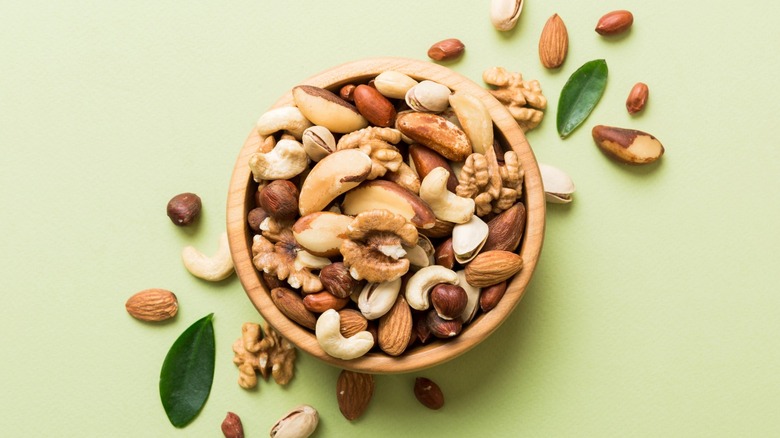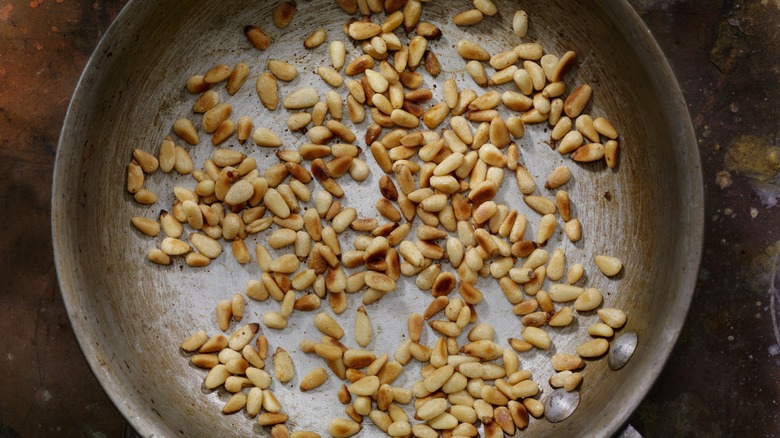Why Over-Toasting Nuts Is A Huge Flavor Mistake
When it comes to enhancing flavors when cooking, nuts are like a secret weapon. Their versatility allows them to be incorporated into a variety of dishes, from sweet to savory. When toasted, nuts will take a dish from good to great, adding a special touch with their unique flavors and crunchy textures. However, there's a common mistake that can turn this secret weapon into a culinary misstep: over-toasting.
Toasting nuts is about applying heat to bring out their natural oils and sugars. This process is what gives toasted nuts their appealing aroma and intensifies their nutty flavors. Ideally, toasting should make nuts a bit crunchy and give them a nice golden color, making them not just tastier but also more visually attractive in a dish. But when over-toasted, all these benefits go out the window.
The problem with too much heat is that it can give the nuts a bitter and burnt taste, which will likely ruin the flavors you're trying to build in your dish. The fine nuances of flavor that different nuts possess, such as the sweetness of almonds, the earthiness of walnuts, or the butteriness of pine nuts, can all be lost in the acrid results of over-toasting. Texture is another casualty. Instead of a satisfying crunch, over-toasted nuts turn hard or chewy, neither of which is pleasant to bite into. And visually, instead of a warm golden hue, they turn dark and unappealing.
Avoiding the over-toasting trap
Toasting nuts perfectly is more about attention than skill. The key is to apply just the right amount of heat for the right amount of time. First, choose the best method. You can toast nuts in a pan, in the oven, or even in a microwave. Each method works well, but you need to adjust the time and temperature accordingly. In a pan, toast nuts over medium heat and keep stirring them so they get evenly heated. In the oven, spread them out in a single layer and bake at a low temperature, around 350 degrees Fahrenheit.
Timing is everything. Nuts can go from perfectly toasted to burnt in just a few seconds. So, it's crucial to keep an eye on them. They're done when they start to smell fragrant and look a shade lighter than you want them. Remember, nuts keep cooking in their residual heat even after you take them off the heat source, so take them off a bit earlier than you think you should.
Stirring or shaking the nuts frequently is another important step. This ensures that they toast evenly and don't burn on one side. Cooling nuts properly is also essential. As soon as they reach the desired color, spread them out on a cool surface or a plate. This stops the cooking process and prevents them from getting over-toasted. Finally, practice makes perfect. The more you toast nuts, the better you'll get at knowing just when they're done.

